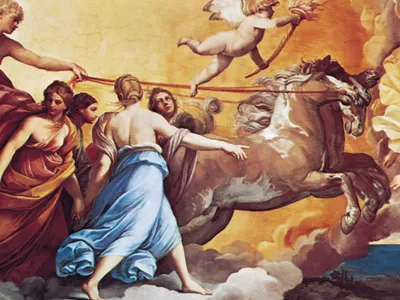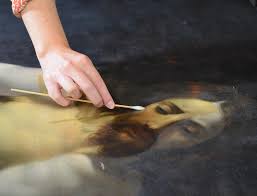
1. Introduction
2. Guido Italian Painter – A Brief Overview
3. Early Life and Influences
4. The Rise to Prominence
5. Artistic Style and Techniques
6. Notable Works
7. Legacy and Impact
8. Guido Italian Painter’s Influence on Contemporary Art
9. Criticism and Controversies
10. Recognition and Awards
11. Personal Life and Trivia
12. Guido Italian Painter in Pop Culture
13. The Importance of Preserving Guido Italian Painter’s Art
14. Conclusion
Introduction:
Guido Italian Painter, Guido an Italian painter, stands as one of the most revered and influential artists in the history of art. Renowned for his exceptional talent and profound impact on the Baroque movement, Guido’s works have left an indelible mark on the world of art. This article delves into this iconic painter’s life, art, and legacy.
Guido Italian Painter – A Brief Overview:
Guido, whose full name was Giovanni Antonio Galli, was born in Italy in the late 16th century. From a young age, he displayed a remarkable aptitude for art and drew inspiration from Italy’s natural beauty and rich cultural heritage.
Early Life and Influences:
Guido’s early life was shaped by his exposure to the works of renowned artists and the vibrant art scene in Italy during the Renaissance period. He received formal training, which further honed his artistic skills, allowing him to experiment with various techniques and styles.
The Rise to Prominence:
As Guido’s talent blossomed, his fame spread across Italy and beyond. His unique style, characterized by dramatic use of light, shadow, and emotional depth, set him apart from his contemporaries. Guido’s exceptional ability to capture human emotions and expressions earned him prestigious commissions and patrons from different parts of Europe.
Artistic Style and Techniques:
Guido’s artistic style was deeply influenced by the Baroque movement, which emphasized grandeur, emotion, and theatricality. He mastered the art of chiaroscuro, creating a striking interplay of light and darkness to add depth and intensity to his paintings. Additionally, Guido’s use of vivid colors and dynamic compositions further enhanced the emotional impact of his works.
Notable Works:
Among Guido’s vast portfolio, some of his most celebrated works include “The Ecstasy of Saint Mary Magdalene,” “Aurora,” and “The Lamentation of Christ.” Each of these paintings showcases his unparalleled ability to convey powerful narratives through art.
Legacy and Impact:
Guido’s influence extended well beyond his lifetime. His innovative techniques and emotive storytelling continued to inspire generations of artists, leaving an enduring impact on art history.
Guido Italian Painter’s Influence on Contemporary Art:
Even in the contemporary art world, Guido’s legacy is evident. Many modern artists draw inspiration from his works and reinterpret his themes in their own unique ways, showcasing the timelessness of his artistic vision.
Criticism and Controversies:
Like many legendary artists, Guido faced criticism and controversies during his career. Some critics questioned his unconventional techniques, while others debated the moral themes depicted in his religious works.
Recognition and Awards:
Guido’s exceptional talent and contributions to the world of art earned him numerous accolades and awards during his lifetime, solidifying his position as a master painter.
Personal Life and Trivia:
Beyond his art, Guido’s personal life remains a subject of fascination. Little is known about his private life, contributing to the air of mystique surrounding the artist.
Guido Italian Painter in Pop Culture:
Guido’s influence transcends the art world and has seeped into popular culture. His works have been referenced and depicted in movies, books, and music, cementing his position as a cultural icon.
The Importance of Preserving Guido Italian Painter’s Art:
The preservation of Guido’s art is of utmost importance to safeguard the cultural heritage and artistic brilliance that he contributed to the world. Museums, galleries, and institutions play a vital role in ensuring that future generations can continue to appreciate his masterpieces.
Conclusion:
Guido, the Italian painter extraordinaire, left an unparalleled legacy in the world of art. Through his masterful brushstrokes and emotive storytelling, he brought timeless beauty and profound emotion to life on the canvas. Guido’s impact on art is immeasurable, and his works continue to inspire and captivate art enthusiasts across the globe.
FAQs:
- Who was Guido, the Italian painter? Guido, whose full name was Giovanni Antonio Galli, was a renowned Italian painter born in the late 16th century. He is celebrated for his exceptional talent and significant contributions to the Baroque movement.
- What was Guido Italian Painter’s artistic style? Guido’s artistic style was deeply influenced by the Baroque movement, characterized by dramatic use of light and shadow, emotive storytelling, and theatricality.
- Which are some of Guido Italian Painter’s most famous works? Some of Guido’s most famous works include “The Ecstasy of Saint Mary Magdalene,” “Aurora,” and “The Lamentation of Christ.”
- How did Guido’s art influence contemporary artists? Guido’s innovative techniques and emotive storytelling continue to inspire contemporary artists who reinterpret his themes in their own unique ways.
- Why is the preservation of Guido Italian Painter’s art important? Preserving Guido’s art is crucial to safeguarding our cultural heritage and ensuring that future generations can appreciate his artistic brilliance.
